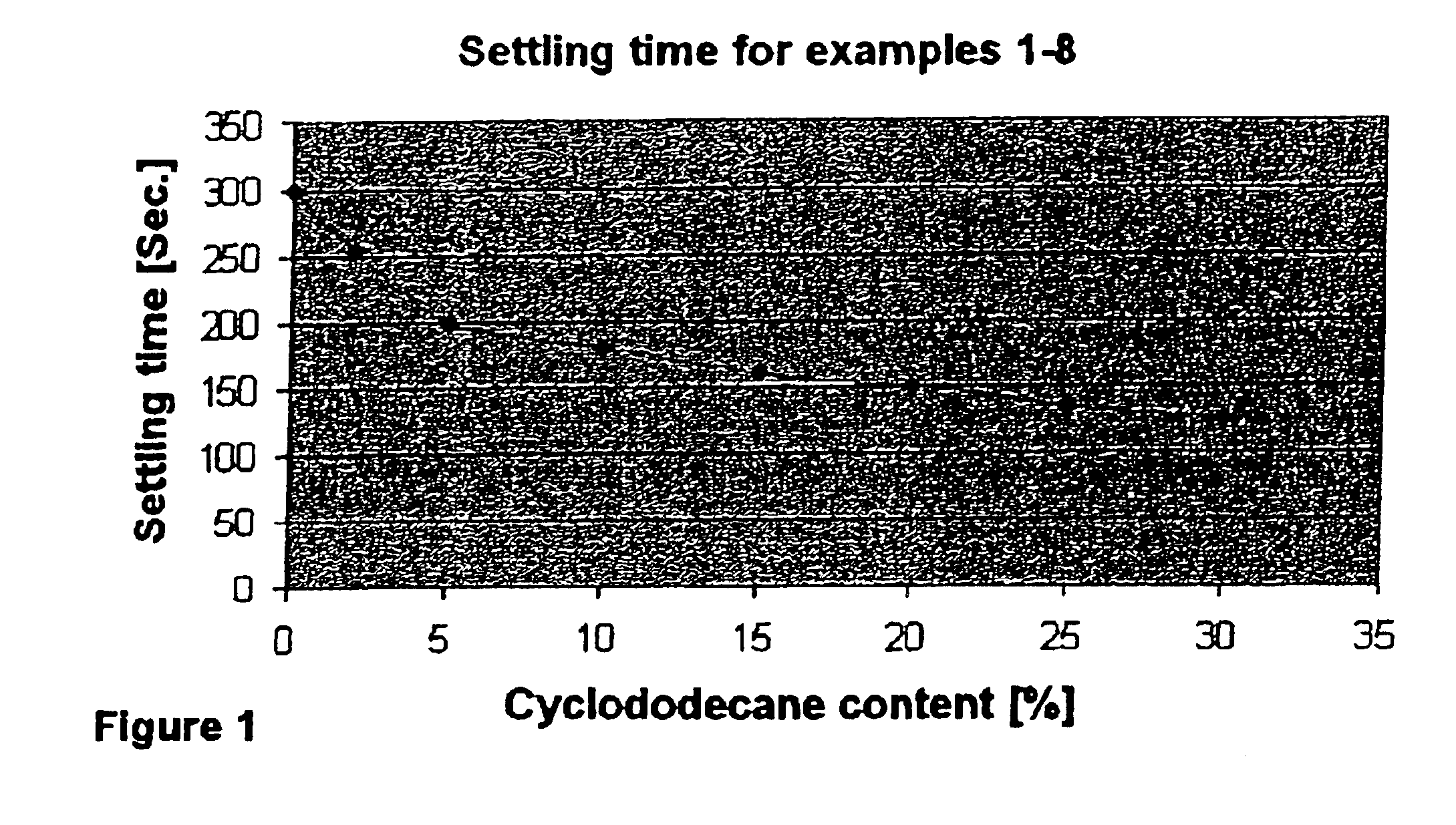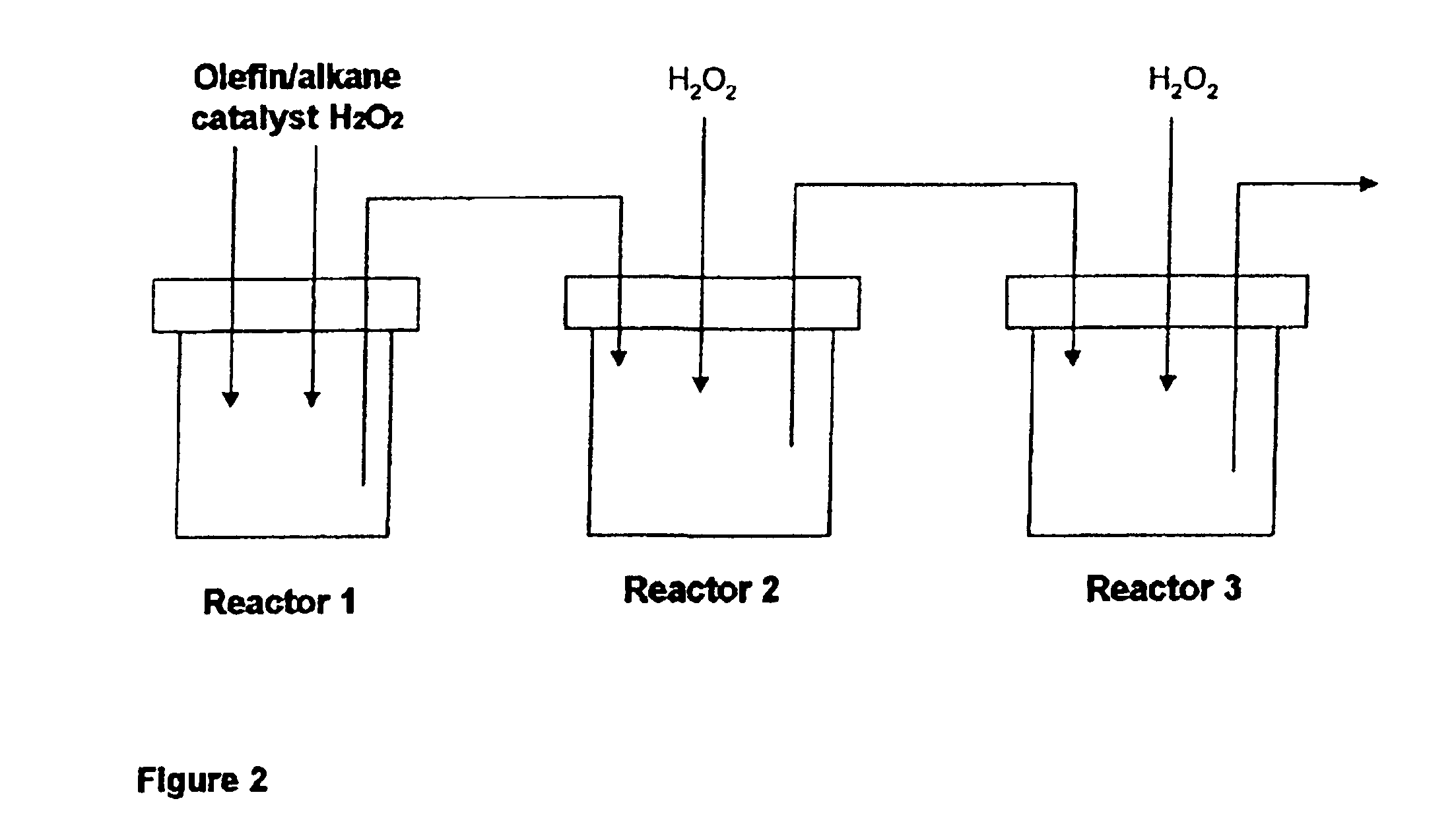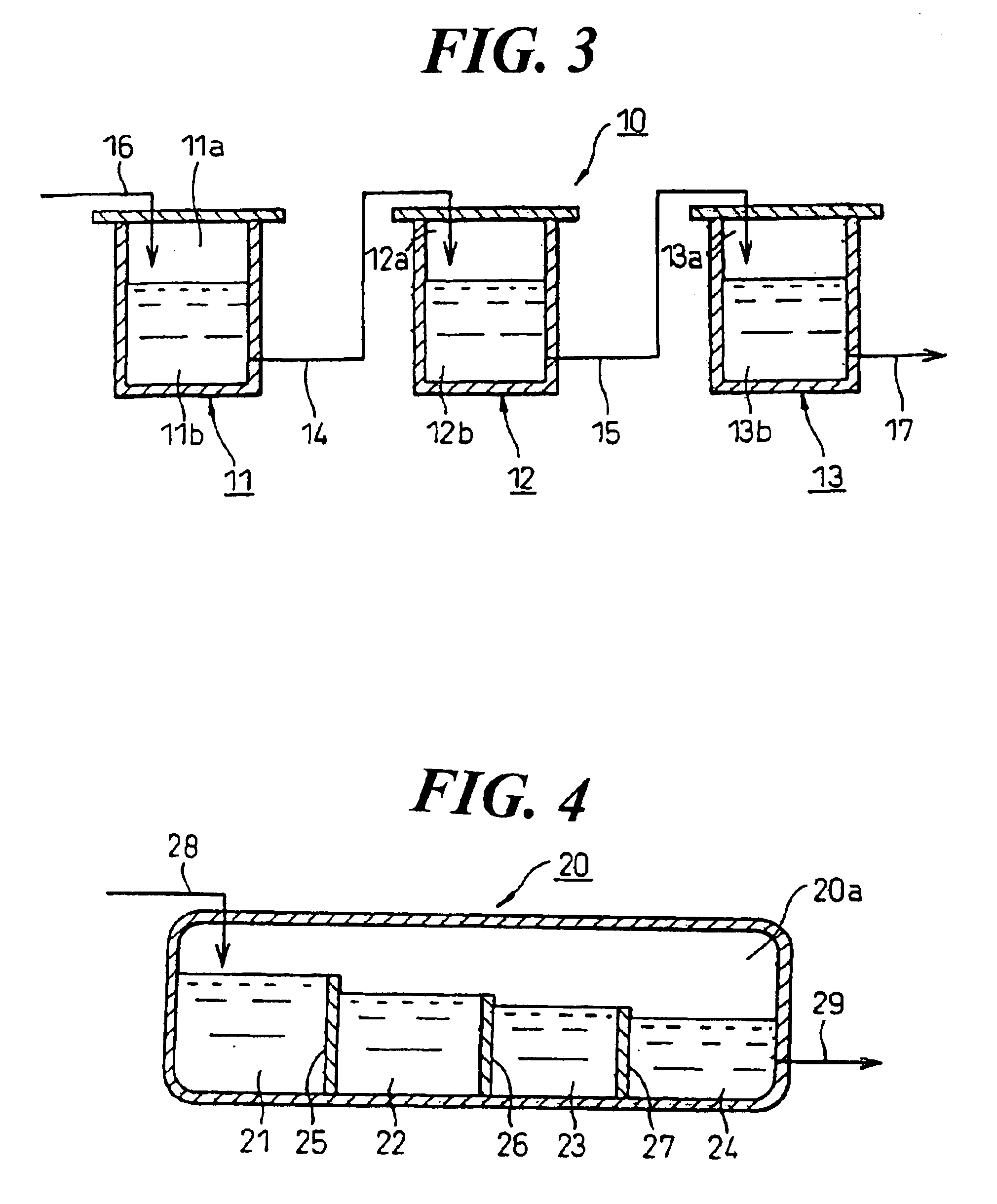Process for the epoxidation of cyclic alkenes
a technology of cyclic alkenes and catalytic oxidation, which is applied in the field of process for the epoxidation of alkenes by catalytic oxidation, can solve the problems of not being able to apply analogously to other alkenes, the process has been used, and the industrial use of such a process is restricted, so as to achieve high space-time yield of epoxide
- Summary
- Abstract
- Description
- Claims
- Application Information
AI Technical Summary
Benefits of technology
Problems solved by technology
Method used
Image
Examples
example 1
Comparative Example
In an apparatus analogous to that shown in FIG. 2, 249 g of cyclododecene (1.5 mol), 0.99 g of sodium tungstate, 0.59 g of phosphoric acid, 14 g of water, 1.2 g of Aliquat 336 (Cognis) and 10.2 g of hydrogen peroxide were placed in reactor 1 and brought to a pH of 3 by addition of sulfuric acid. The mixture was then heated to 90° C. and 102 g of 50% strength of hydrogen peroxide solution were metered in over a period of 2 hours. A cyclododecene conversion of about 90% was achieved in reactor 1. The volume was about 300 ml. From then on, 2.7 ml / min of a mixture of cyclododecene with 0.2 mol % of Aliquat 336 and 0.73 m / min of a solution of 0.94% of sodium tungstate, 0.56% of phosphoric acid and 98.5% of hydrogen peroxide (50% strength) were metered in continuously over a period of 4 hours. The mixture flowed continuously over an overflow and into reactor 2 which likewise had a volume of 400 ml and was operated at 90° C. After 4 hours of continuous operation, the con...
example 2
Example According to the Invention
The experiment was conducted by a method analogous to that of Example 1, except that 2% of cyclododecane, based on cyclododecene, was added to the starting materials. The results are shown in Table 1.
example 3
Example According to the Invention
The experiment was conducted by a method analogous to that of Example 1, except that 5% of cyclododecane, based on cyclododecene, was added to the starting material. The results are shown in Table 1.
PUM
| Property | Measurement | Unit |
|---|---|---|
| Temperature | aaaaa | aaaaa |
| Percent by mass | aaaaa | aaaaa |
| Percent by mass | aaaaa | aaaaa |
Abstract
Description
Claims
Application Information
 Login to View More
Login to View More - R&D
- Intellectual Property
- Life Sciences
- Materials
- Tech Scout
- Unparalleled Data Quality
- Higher Quality Content
- 60% Fewer Hallucinations
Browse by: Latest US Patents, China's latest patents, Technical Efficacy Thesaurus, Application Domain, Technology Topic, Popular Technical Reports.
© 2025 PatSnap. All rights reserved.Legal|Privacy policy|Modern Slavery Act Transparency Statement|Sitemap|About US| Contact US: help@patsnap.com



